Design School: Types of Wood Paneling
One of my favorite ways to bring charm to a new build is with panel molding. My maternal grandfather, who was a master carpenter, is my inspiration for incorporating wall paneling and molding into every home I design and build.
There are many different types of wood paneling to elevate your home, whether it’s a large room that needs warmth, or a small corner that craves texture, wainscoting or another form of wall paneling is almost always the answer. These decorative features are also a cost-effective way to transform your home drastically and can even increase its value.
It’s a timeless classic that you can enjoy for many years to come and here I’ll share some of my favorites.
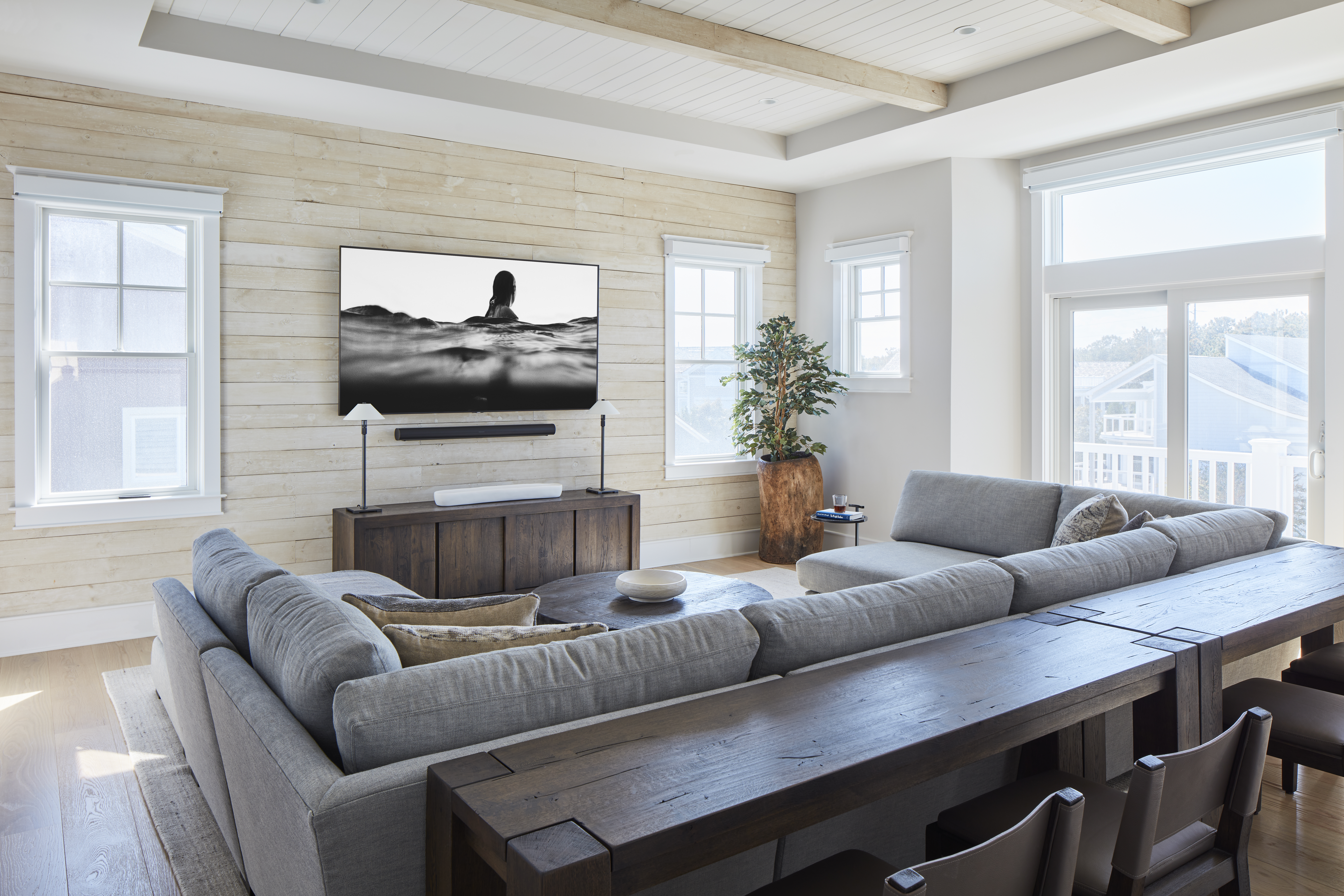
Before I get into the types of wall paneling, here’s a quick primer on the difference between wainscoting and panel molding:
Panel molding reaches above the typical chair rail height and can even cover the entire wall. It can also be applied to the ceiling and can consist of either solid panels or separate trim pieces put together to create different designs and patterns.
Wainscoting refers to a type of decorative panel molding that is usually at chair rail height (approximately 32″ above the floor) or below.
TYPES OF PANEL MOLDING:
Plank wall: This application consists of a series of wood planks that run floor-to-ceiling either horizontally or vertically (although horizontal is more common). Plank width varies depending on the size of the room and personal preference. Whether you use reclaimed wood, new wood, or new wood made to look old, a plank wall adds tons of warmth and texture to a space. The paint, stain color, and finish, as well as the plank direction and width, will play a big role in the overall look and feel.
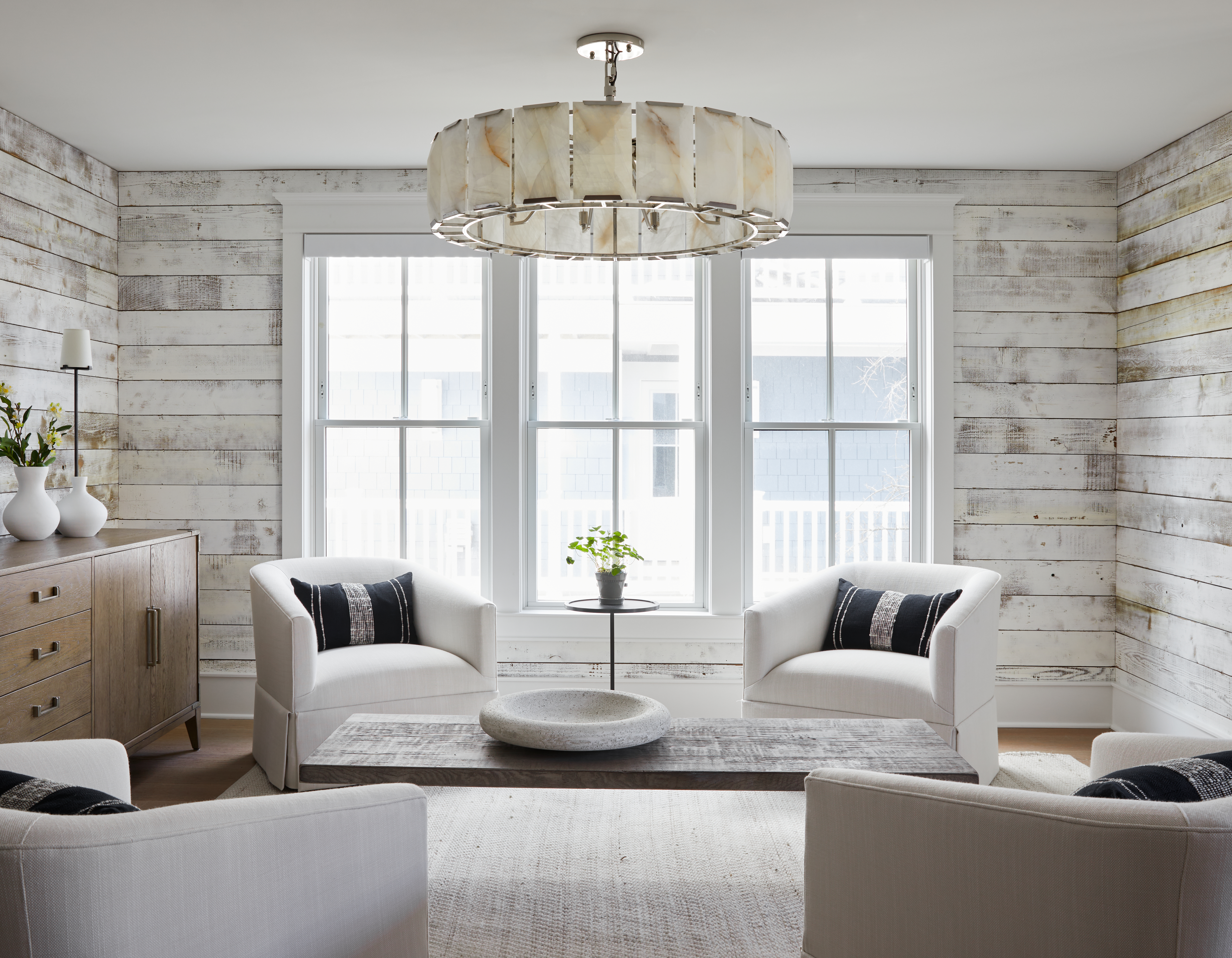 Photo: Above we used a whitewash on this reclaimed wood wall.
Photo: Above we used a whitewash on this reclaimed wood wall. 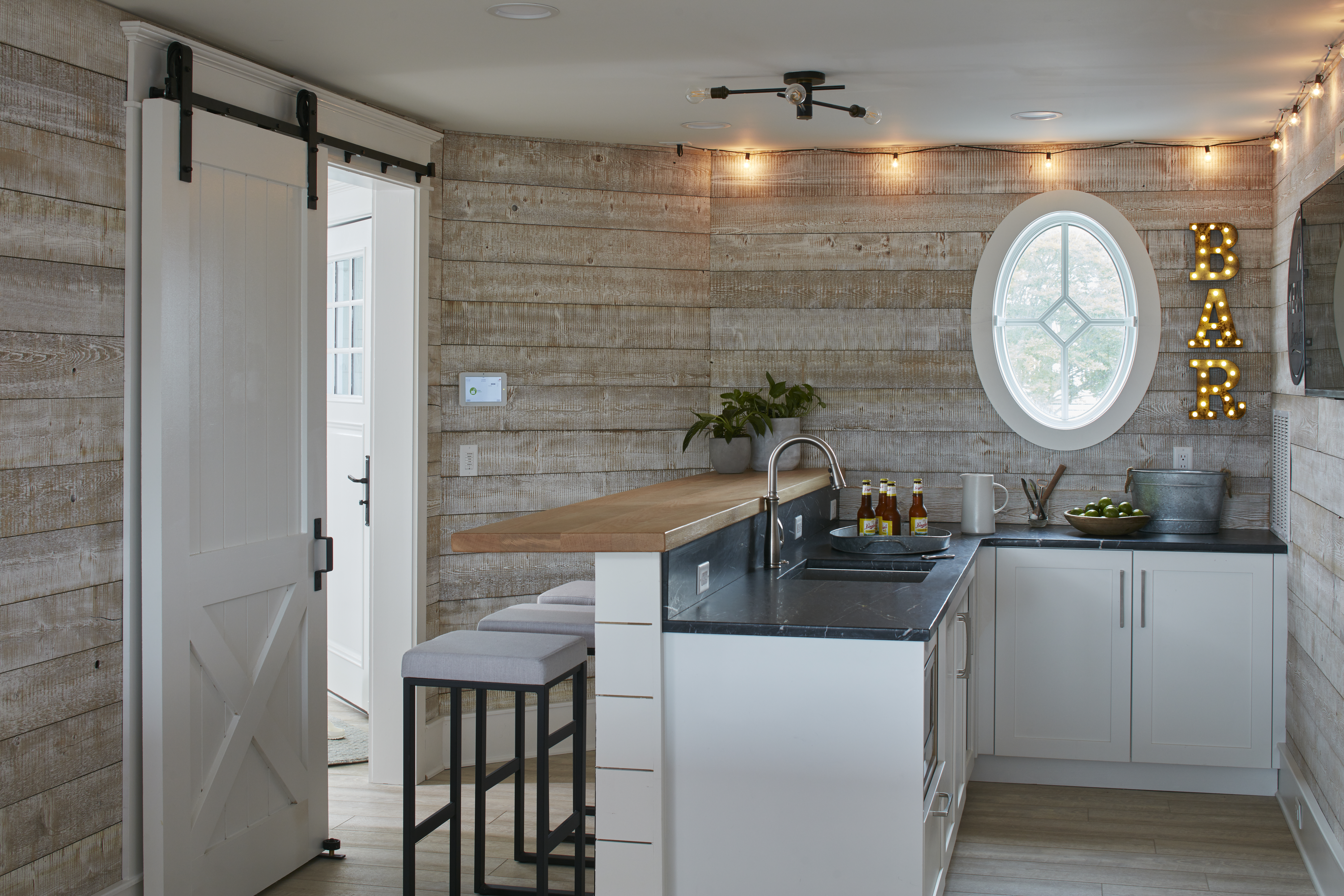 Photo: For this bar, we used a contemporary sandstone finish.
Photo: For this bar, we used a contemporary sandstone finish.
Board and batten: Board and batten consist of panels (boards) with narrow strips of wood (battens) concealing the seams between them. It’s often capped with a wider plate rail that creates a platform for art, photos, and decorative objects. This simple design can run the whole height of a wall, three-quarters up, or even stop halfway. Board and batten is common in bathrooms, bedrooms, and dining rooms.
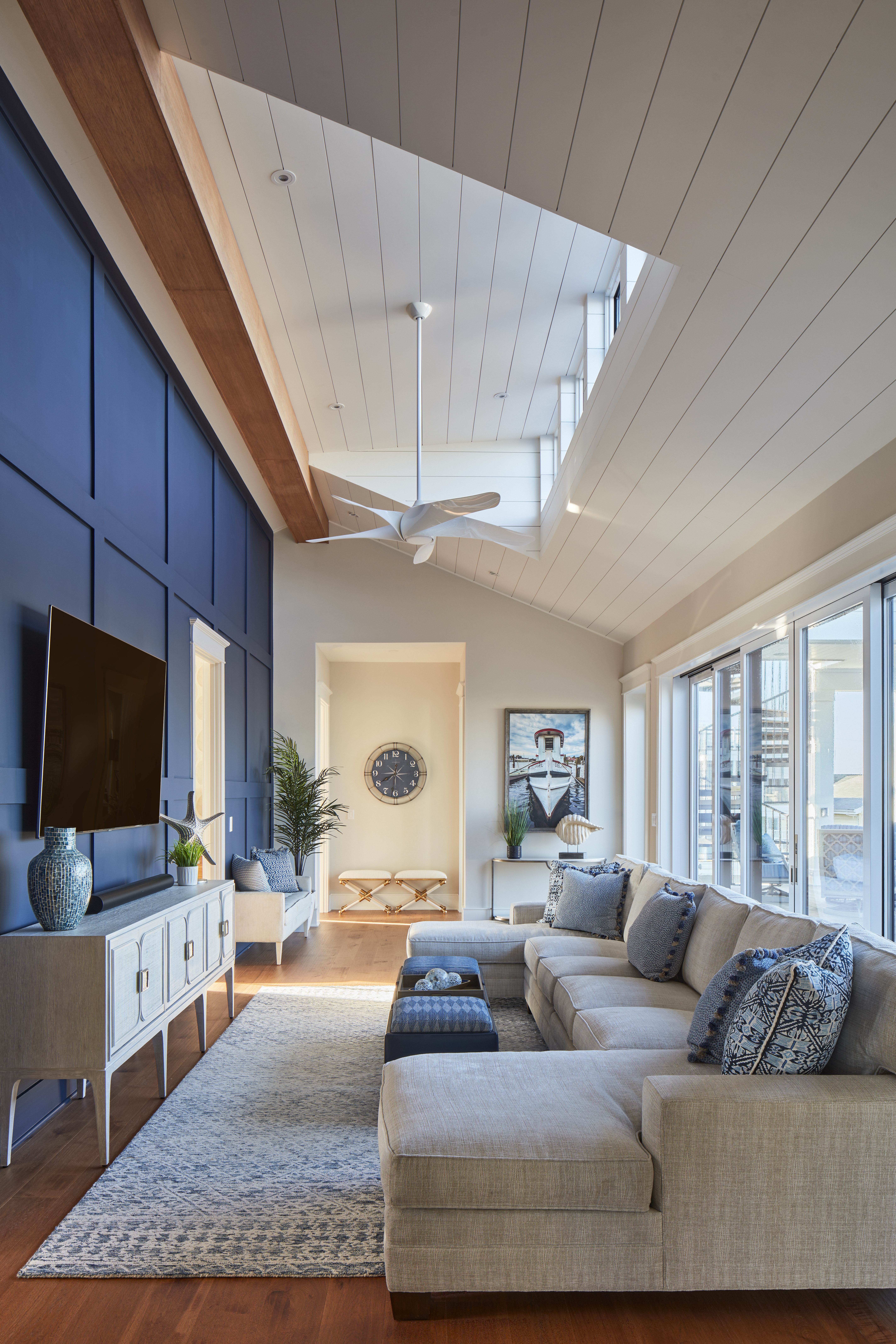
Shiplap: Shiplap acquired its name from the fact that its panels overlap. Contrary to popular belief, shiplap is not just wood planks (or sheathing) nailed to a wall. The design, which originated on home exteriors, features grooved boards fitted tightly together with “rabbets” (or notches) to form a weatherproof seal. Because its joints are often hidden so well, it’s easy to mistake true shiplap for simple sheathing. Shiplap is inherently informal, making it ideally suited for farmhouses, beach houses, and cottage-style homes
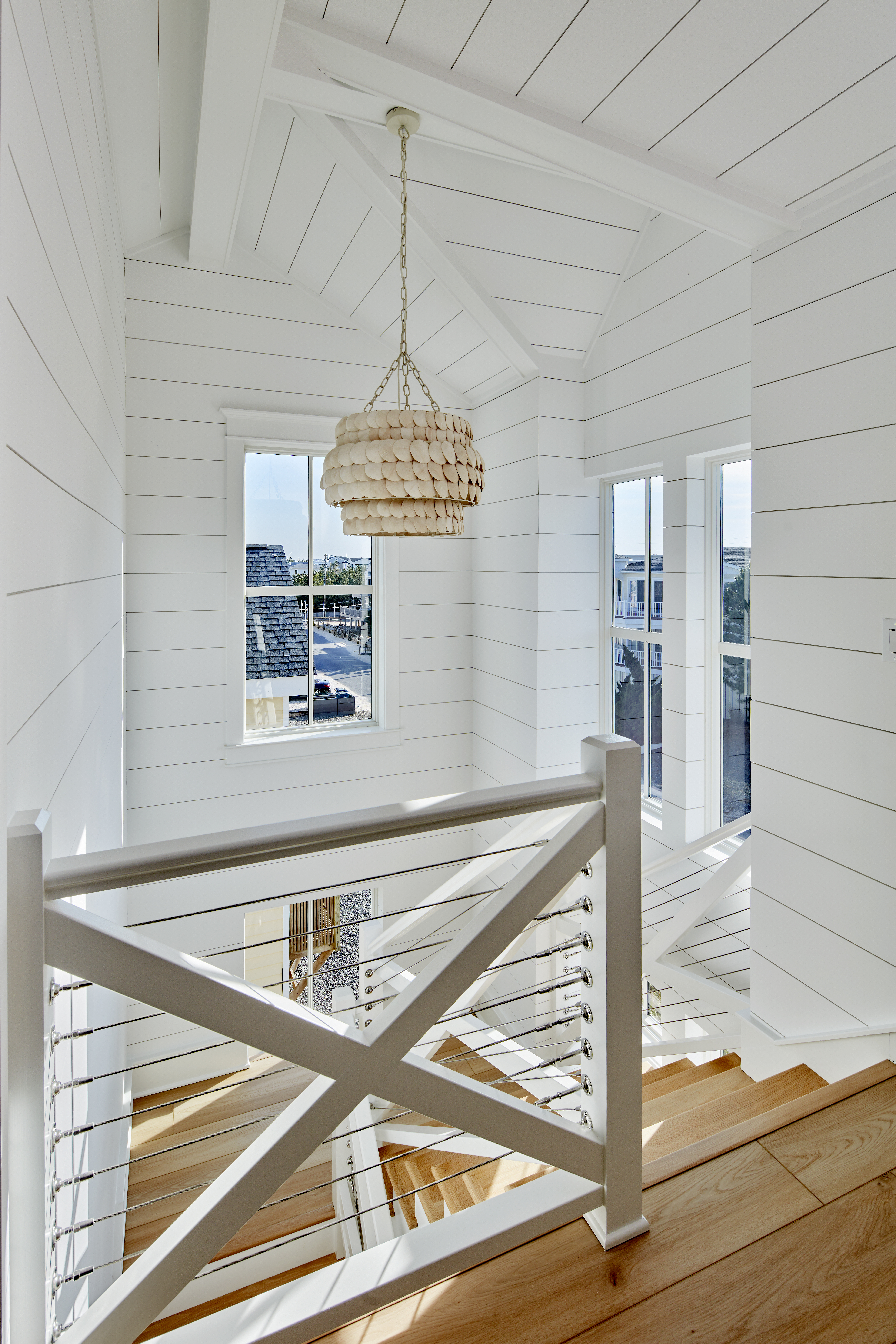
Pro Tip: We use Poplar wood boards for our shiplap with 1/8″ separation between boards.
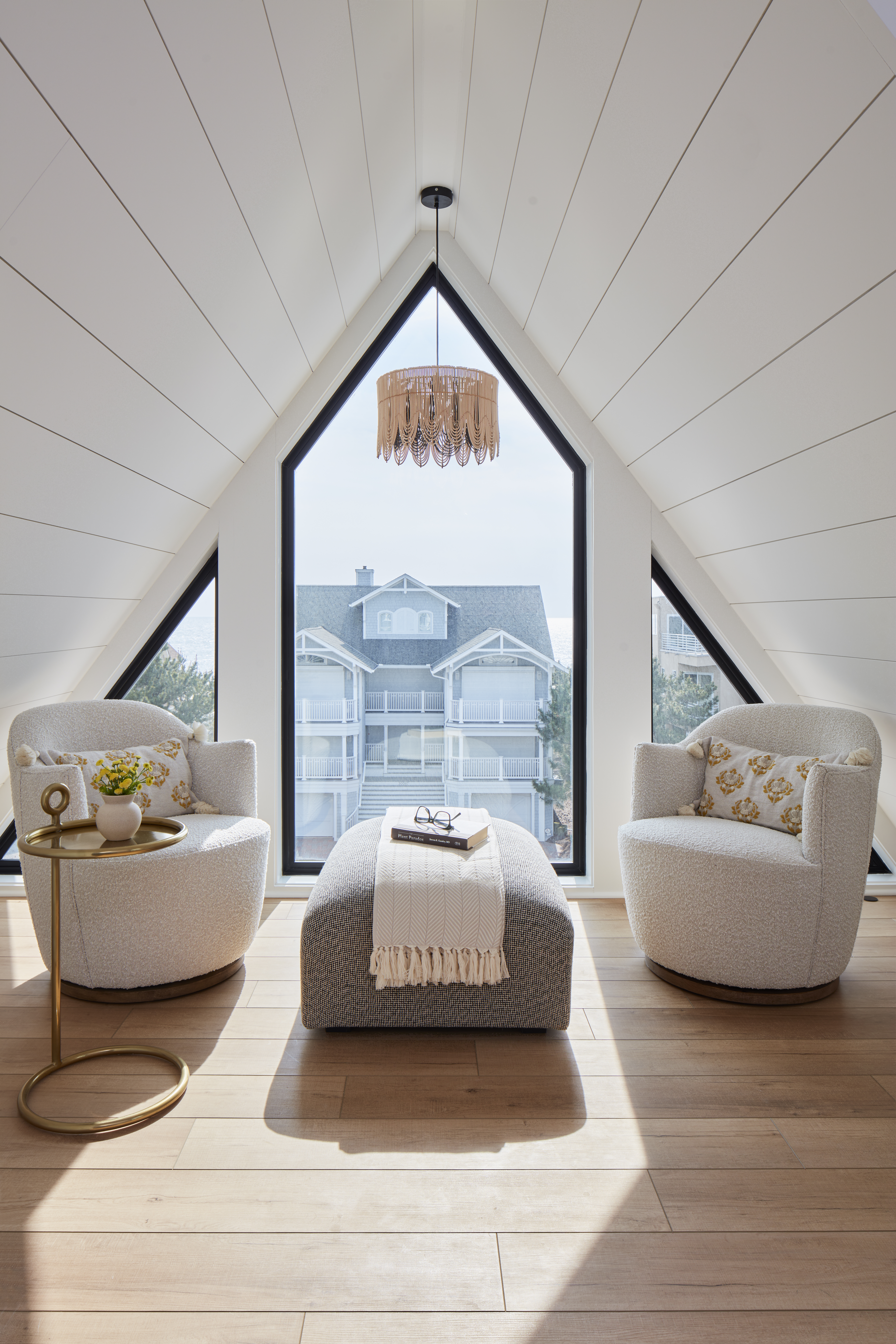 Tongue and groove: Tongue and groove is similar to shiplap and offers the same clean, classic look, but is usually a bit pricier. The difference between these two styles is how they connect – instead of shiplap’s rabbet joint, tongue and groove connect where the “tongue” of one board fits into the “groove” of another. Where the boards in a shiplap application overlap slightly, tongue-and-groove boards fit tightly together.
Tongue and groove: Tongue and groove is similar to shiplap and offers the same clean, classic look, but is usually a bit pricier. The difference between these two styles is how they connect – instead of shiplap’s rabbet joint, tongue and groove connect where the “tongue” of one board fits into the “groove” of another. Where the boards in a shiplap application overlap slightly, tongue-and-groove boards fit tightly together.
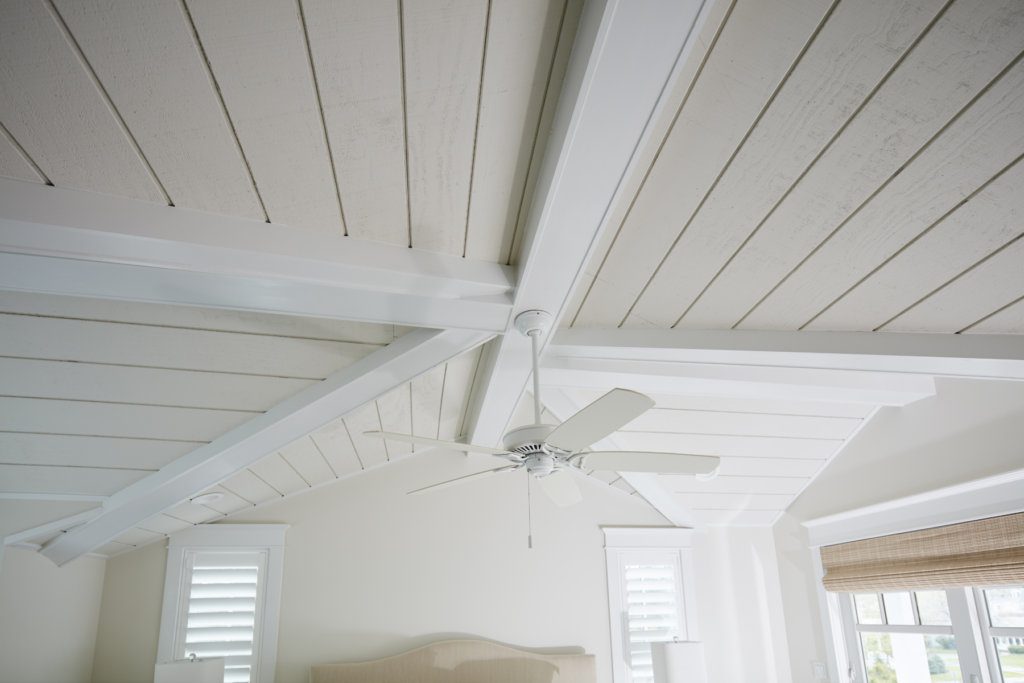
Reeded paneling:
Reeded wall paneling, characterized by its linear grooves or channels, is the latest trend in interior design, offering a contemporary yet timeless aesthetic. This versatile feature adds depth and texture to any space, whether used as an accent wall or to create visual interest throughout a room. Its popularity stems from its ability to effortlessly elevate modern, minimalist, or traditional decor styles with its understated elegance. Here we used Birch reeded wood panels for this sitting room.

Mixing Materials
Don’t be afraid to mix wall panels for a decorative effect. Here are a few examples of how we mixed shiplap and old wood using a contemporary sandstone finish.
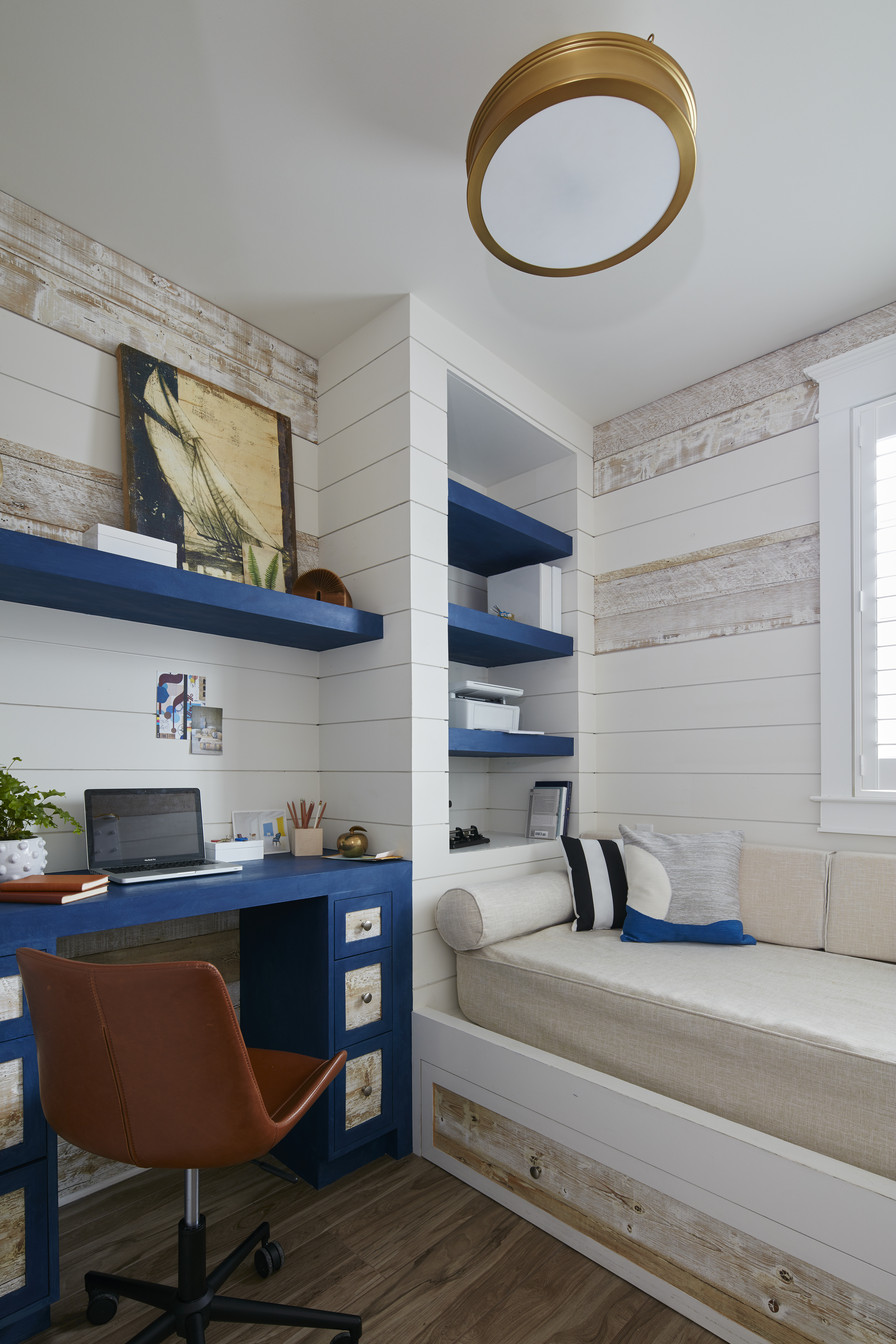
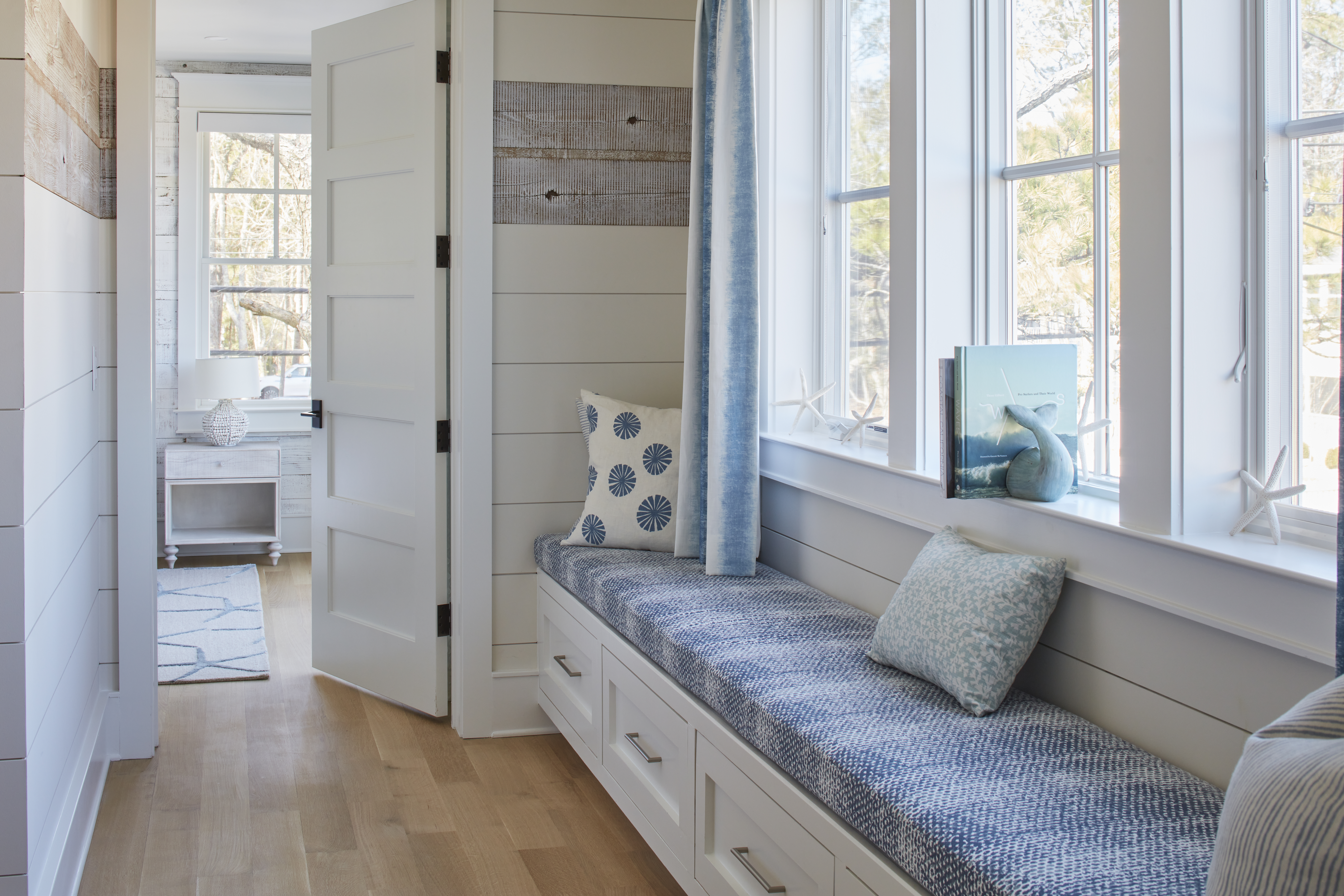
For more plank wall inspiration from our builds, click here.
WAINSCOTING:
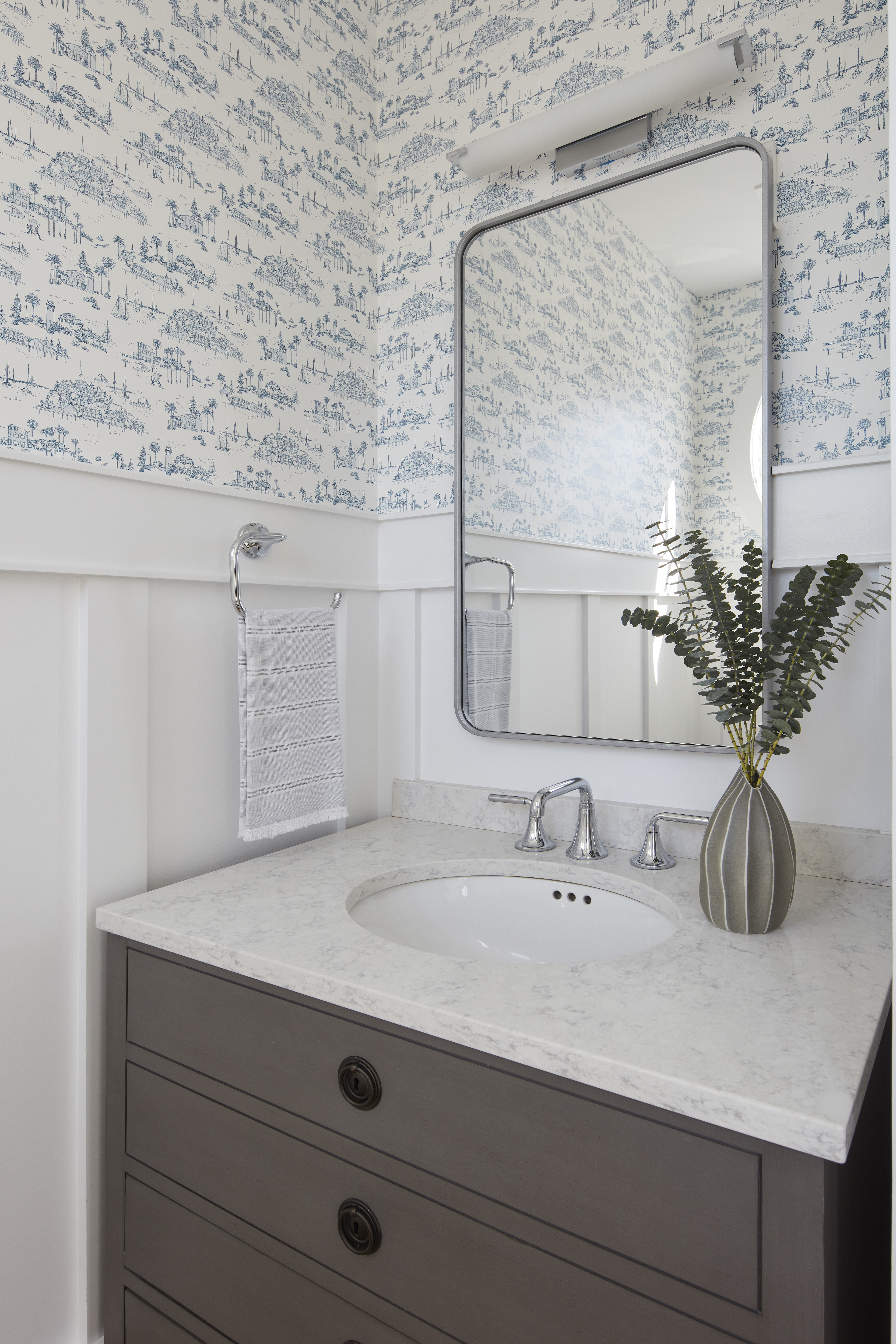
Wainscoting can be installed at varying heights – on a full wall, one- or two-thirds up, or – in some instances – even halfway up the wall. But always keep an eye on proportions – paneling that’s too low can look skimpy and be dwarfed by other elements in the room.
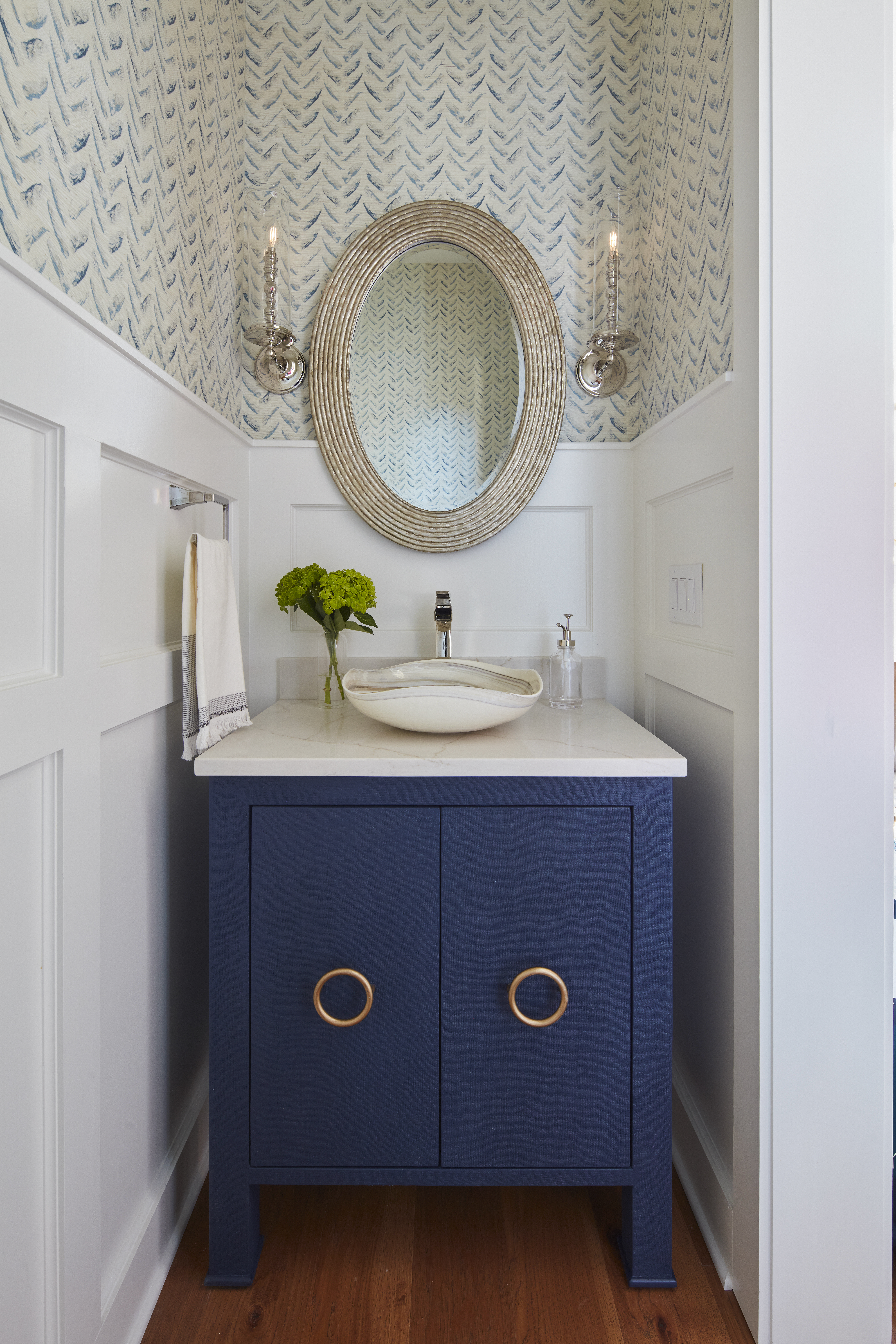
Pro Tip: To make powder rooms feel large, I like to install wainscoting three-quarters up and then add wallpaper or a bold paint color on the top quarter. This allows you to go bold without overwhelming the space.
However you choose to install your paneling, have fun with it! Class dismissed!
